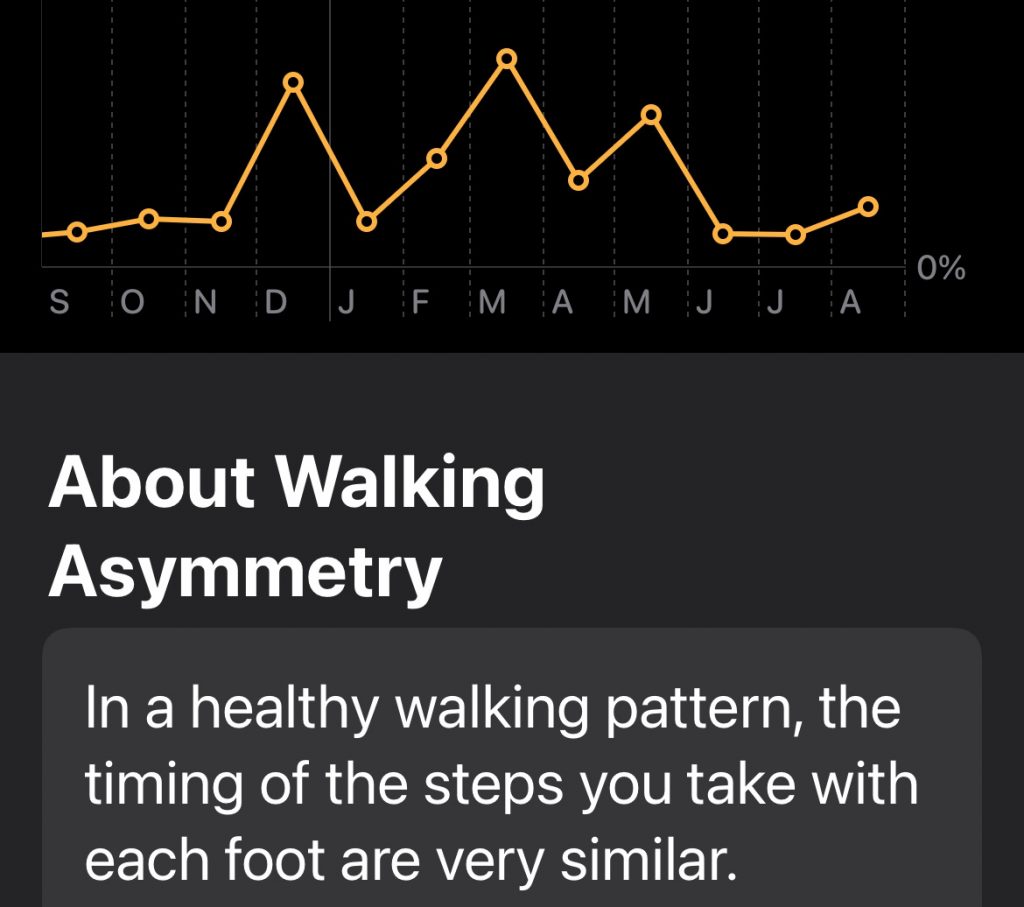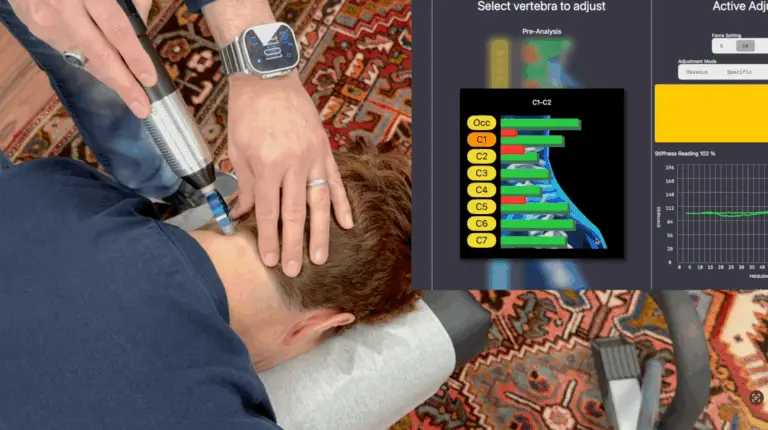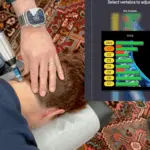Recently, I had a flare up from my L5 – S1 herniated disc. When this happens, I know it’s time to get a checkup with my Chiropractor and see what we can do, as a team, to resolve the pain symptoms. Generally, we use the PulStar to analyze and adjust the area along with any other locations that indicate they need some help.
I also like to do some extra walking when I start to feel pain from this condition because I know, from speaking to my Chiropractor about my care, that motion is the key to help keep these symptoms at bay and to help the disc hydrate and decrease its size. I also have an iPhone and an Apple Watch that I use to track my exercise.
While reviewing some of my excersize data, I came across some interesting additional data that I didn’t even know I had access to. Not only does apple track your steps, they also track things like Walking Asymmetry and Double Support time.
Walking Asymmetry is a measure of how similar each of your steps you take with each foot. Uneven walking patterns can indicate a limp or other sign of disease, injury or other health issues. When I reviewed this data, the below is what I saw:
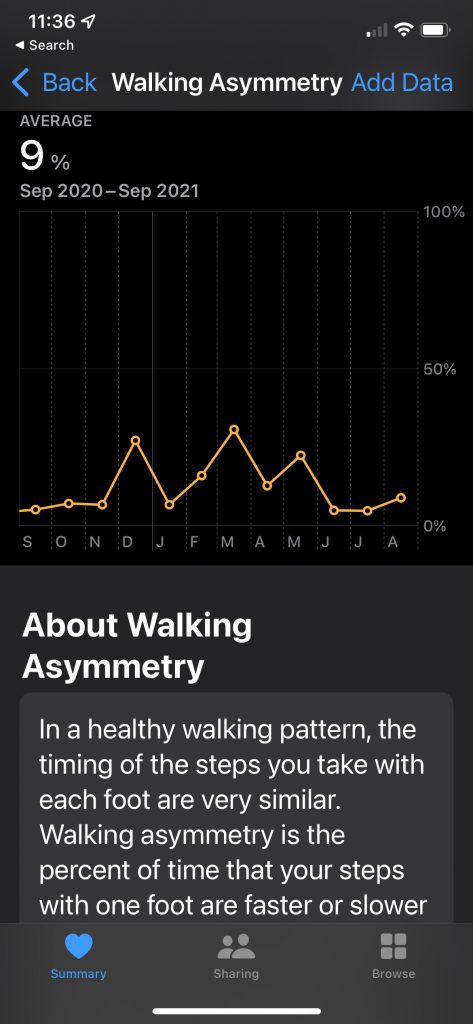
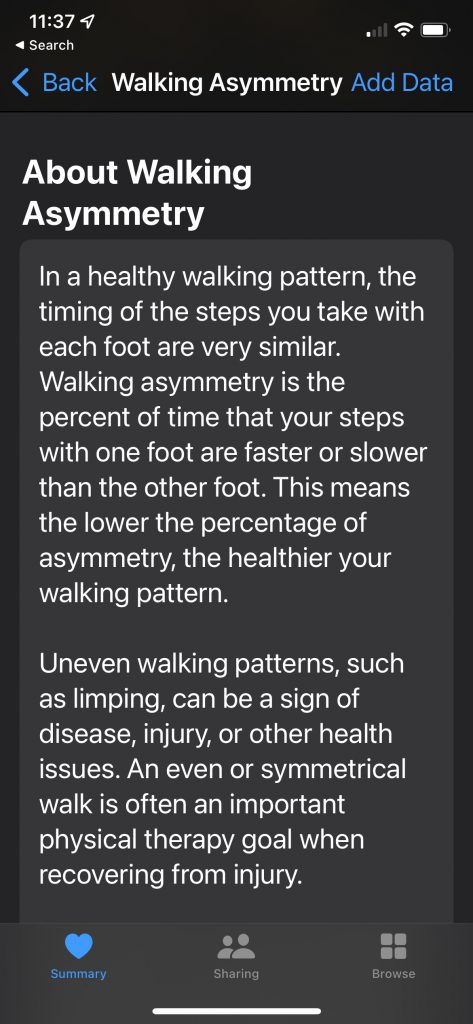
Now, I didn’t start to feel pain until March, but look at how my walking pattern had changed before that time! Had I been reviewing this data, perhaps I would have visited my Chiropractor sooner before I started to feel pain. Then take a look at the data after I visited my Chiropractor! The asymmetry started reducing quickly and has evened out nicely. I see it is starting to trend up, so I’ll review the data more closely in the next few weeks to see if another visit to my Chiropractor is in my future before I start to feel pain.
Another interesting measure is Double Support time. This is the percentage of time that both feet are on the ground. A lower number can indicate that you have better balance. This can be a great measure for older patients to help show them how your care is helping them in the real world to keep them more balanced.

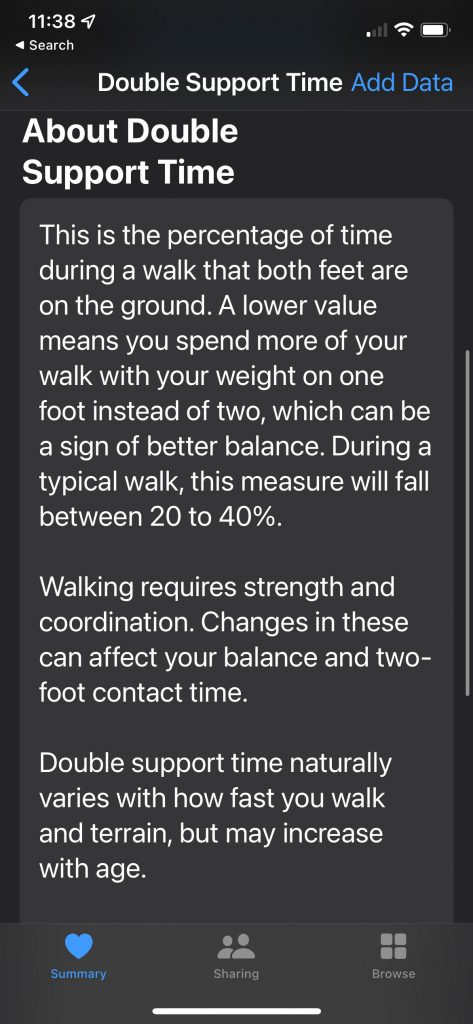
This is a great way to help your patients even when they are out of your office. When your patients have the power to review their own health data in real time, it makes your job as a Chiropractor that much easier. Now the patient will let you know when they need to come in once they hit the wellness stage. I even think this could be used as objective evidence that the patient’s activities of daily living are improving with your care plan too!
Patients love technology and the PulStar is a great way to help show your patients that they may have an issue before they start to feel it. As your patients begin to understand how the PulStar works, they gain insight into their own health issues and have a way to help track their care, helping you, help them. Check out the PulStar online demos if you don’t have a PulStar to see how it works and how technology in your practice can help you and your patients.
How do you show your patients they have subluxations in your practice? Let us know in the comments below.


